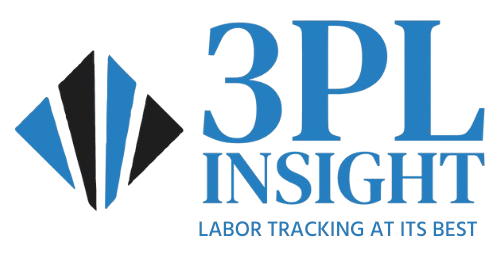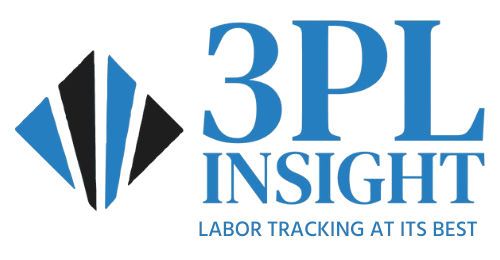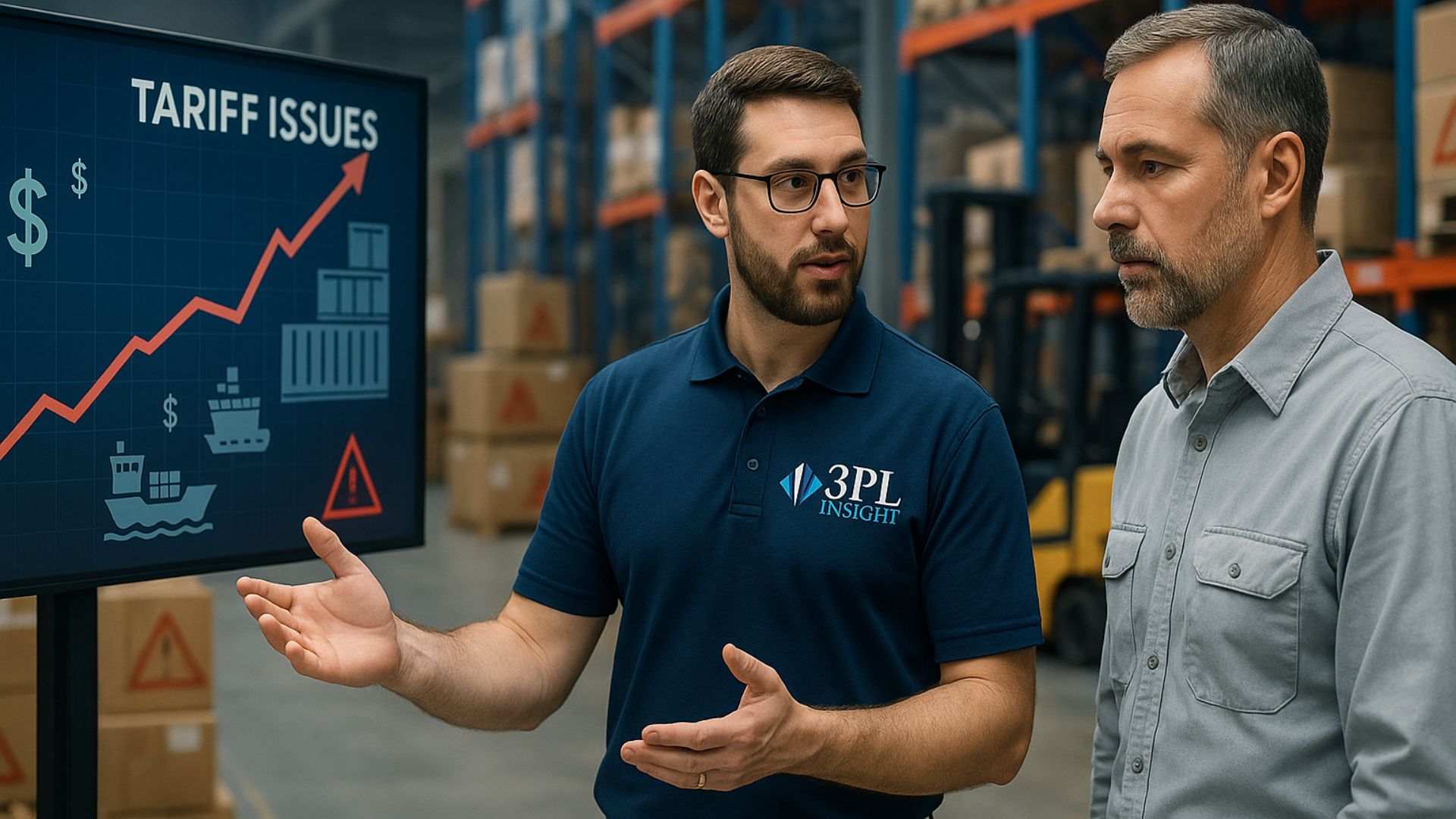Labor efficiency within Third-Party Logistics (3PL) companies is a critical element for optimizing operational processes, reducing costs, and maintaining high service levels. As tariff-related disruptions continue to impact the global logistics industry, achieving labor efficiency has become even more crucial. In this blog, we’ll explore a structured approach to improving labor efficiency in 3PL warehouses while factoring in the current challenges posed by tariffs.
Conduct a Labor Audit
A company must conduct a thorough labor audit to identify inefficiencies that external pressures like tariffs could worsen.
Benchmarking: labor productivity metrics against industry standards helps determine whether the workforce operates efficiently or needs improvement. High tariffs can erode margins, and benchmarking can help a 3PL provider identify areas where labor costs are escalating unnecessarily.
Time & Motion Studies: These studies help to understand the time taken for each task, uncovering bottlenecks in the process. In a 3PL environment affected by tariffs, where cost pressures are high, these studies are essential for pinpointing waste and improving labor utilization.
Task Breakdown: Breaking down complex tasks into manageable steps can reveal hidden inefficiencies. Tariff increases often lead to more complex supply chains and additional inventory checks, making task breakdowns critical to maintaining smooth operations.
Optimize Warehouse Layout & Processes
The structure and flow of warehouse operations play a significant role in labor efficiency. By improving layout and processes, 3PL providers can minimize unnecessary labor costs and mitigate the impact of tariffs on overall operational expenses.
Cross-Docking: Cross-docking allows companies to directly transfer incoming goods to outbound shipments, significantly reducing handling costs. With tariffs driving up import and export fees, minimizing unnecessary handling is a cost-effective way to cope with additional tariff expenses.
Slotting Optimization: Positioning high-turnover SKUs closer to packing or shipping areas minimizes the amount of time employees spend moving around the warehouse. In light of tariffs, reducing the time spent moving inventory translates directly into cost savings, especially when dealing with high-value goods affected by new trade tariffs.
Lean Principles: Implementing 5S principles—Sort, Set in Order, Shine, Standardize, Sustain—helps create an organized workspace that minimizes distractions and inefficiencies. With tariffs causing price fluctuations and supply chain delays, maintaining an organized and efficient warehouse becomes crucial to reduce operational delays.
Invest in Technology
To enhance labor efficiency, investing in technology is vital, especially as tariffs increase the pressure on logistics providers to remain competitive.
Automation & Robotics: Automation, such as Autonomous Mobile Robots (AMRs) and conveyor systems, can reduce the reliance on manual labor for repetitive tasks. As tariffs increase the pressure on margins, automation becomes an effective tool for controlling costs while maintaining operational efficiency.
Warehouse Management System (WMS): A WMS can optimize picking routes, track inventory in real-time, and dynamically allocate tasks. This helps to minimize the labor required for redundant tasks and ensures that the warehouse operates as smoothly as possible, even as tariff-related delays cause disruption in the supply chain.
Labor Management System (LMS): An LMS enables 3PL providers to monitor and manage labor productivity by tracking KPIs and allocating labor based on real-time requirements. By optimizing labor deployment, warehouses can reduce idle time, particularly during demand fluctuations caused by tariff changes or shipping delays.
Enhance Labor Scheduling
Efficient labor scheduling is crucial to balance workload and costs, especially in the context of fluctuating demand caused by tariff changes.
Demand Forecasting: By forecasting demand, 3PL providers align labor schedules with peak times, ensuring that they prepare the workforce for busy periods without overstaffing during slower periods. Tariffs may cause sudden shifts in supply and demand, making accurate forecasting even more essential.
Flexible Staffing Models: Using a mix of full-time, part-time, and temporary workers can help 3PL providers manage seasonal demand variations and avoid the costs associated with excessive permanent staff. With tariffs increasing unpredictability, flexible staffing helps adapt quickly to changing needs.
Shift Optimization: Staggering shifts can help to reduce labor bottlenecks during peak times, allowing warehouses to handle high volumes of goods more effectively. This approach can be particularly valuable when tariff issues lead to delays or disruptions in the supply chain.
Standardize Processes & Train Employees

Companies standardize procedures and provide ongoing training to ensure that all employees can adapt effectively to the evolving challenges within the warehouse environment.
Cross-Training: Cross-training employees to perform multiple roles increases flexibility within the workforce. With tariffs potentially causing fluctuations in demand or supply chain interruptions, having a versatile team that can seamlessly step into different roles ensures that operations continue without delays.
Standard Operating Procedures (SOPs): When companies establish clear SOPs, they eliminate confusion and inconsistency, ensuring that employees perform tasks efficiently. Standardization becomes particularly important when tariff-related disruptions may force 3PLs to adapt to new customs procedures or compliance standards.
Continuous Training: Ongoing training is crucial in ensuring that employees stay updated on best practices, safety protocols, and new technologies. With tariff changes leading to evolving regulations and documentation requirements, well-trained staff can navigate these complexities with ease.
Implement Performance Metrics & Incentives
Implementing performance metrics and incentive programs ensures that labor remains productive and motivated, especially in the face of the additional challenges posed by tariffs.
KPIs to Track: Key performance indicators (KPIs) such as units picked per hour, order accuracy rate, and labor cost per order are essential for measuring labor efficiency. Because tariff impacts often lead to changes in product pricing and shipping, having accurate KPIs helps 3PL providers effectively track how they utilize labor in response to these fluctuations.
Incentive Programs: Rewarding high performers through incentives or recognition programs helps maintain motivation. This is particularly important in times of tariff-driven uncertainty, as maintaining morale can be challenging when margins are squeezed, and operational costs increase.
Improve Communication & Workflow

Improving communication and workflow between teams is key to enhancing labor efficiency. In the context of tariffs, improved communication helps teams respond swiftly to disruptions and mitigate the impact of external challenges.
Real-Time Updates: Using handheld devices or tablets to communicate tasks instantly reduces the chance of miscommunication and ensures that workers remain on track. As tariffs cause fluctuations in trade volumes and customer demand, real-time updates help to keep employees aligned with the latest needs.
Daily Stand-Ups: Short, focused meetings help teams align on priorities and address issues as they arise. These meetings are crucial when tariffs cause sudden changes in order volumes or inventory handling requirements.
Feedback Loops: Encouraging workers to provide feedback and suggest improvements ensures that inefficiencies are addressed proactively. Employees on the front lines are often the best source of insight into issues caused by tariffs, making feedback loops a valuable tool for process improvement.
Continuous Improvement (CI)
A continuous improvement mindset ensures that processes are always being optimized, particularly when faced with evolving challenges such as tariffs.
Kaizen Events: Periodic workshops focused on specific processes allow teams to drive incremental improvements. These events can help identify and address inefficiencies in labor utilization that arise from tariffs, such as slower processing times due to customs clearance delays.
Root Cause Analysis: When inefficiencies occur, using techniques like the 5 Whys or Fishbone Diagrams can help to identify and resolve the underlying causes. This approach is invaluable when tariffs introduce disruptions that affect workflows, ensuring that long-term solutions are implemented.
In conclusion, optimizing labor efficiency within 3PL warehouses is essential not only for reducing costs and improving operational performance but also for mitigating the impact of external factors like tariffs. By implementing a structured approach that includes labor audits, process optimization, technology investments, and ongoing training, 3PL providers can maintain their competitiveness in a challenging environment. Moreover, integrating flexible labor scheduling and performance tracking ensures that operations remain agile and capable of responding to the unpredictability caused by tariff-related disruptions.
At 3PL Insight, we empower 3PL warehouse and Logistics providers with the tools and knowledge they need to optimize operations and tackle challenges like tariff impacts, labor inefficiencies, and supply chain disruptions. Through our comprehensive Labor Management System (LMS), Labor Planning solutions, and Real-time tracking solutions, we streamline processes, enhance productivity, and provide actionable insights.
Our expert-driven content and resources, including detailed guides and industry benchmarks, help businesses stay ahead of the curve in optimizing labor, improving warehouse layouts, and leveraging technology to drive efficiency. With 3PL Insight, you gain the expertise and tools to reduce costs, boost service levels, and adapt to the ever-evolving logistics landscape.


